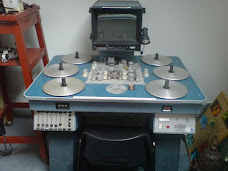Tee Thandy HNC Creative Media
Sunday 4 July 2021
health and safety
history of editing
the company moviola is loacted in hollywood. it allowed editors to study individual shots in their cutting rooms, to determine more precisely the best place to cut the shot.
the vertical oriented moviola's were the standard for film editing in the US until the 1970s when horizontal flatbed editor systems became more common.
this is the flatbed editing system used to edit film for a motion picture. the most common brands is steenback and K-E-M, both of which were invented in germany in the 1930s.the picture is shot on film while the sound is recorded separately. when the editor finds a point to cut from one shot into another, he marks it on both picture and sound rolls, then makes the cut and splices in the next shot.
linear editing is the process of making cuts and edits on film. it must be done sequentially in order to create a final film print of an edited piece. it is necessary for the film format and had been the only way to edit until computers came into prominence for post production.
non-linear editing is a non-destructive editing process. it is achieved by loading the material into the computer from analogue or digital tapes. the editing process creates a new 'tape' by storing all the commands entered by the operator.
from 199, new editing softwares allowed people to edit their own films from home such as Adobe. since then, higher quality softwares have been introduced such as Final cut pro , purchased by apple in 1999.
Monday 21 June 2021
music video and evaluation
silver soul -beach house
evaluation
Friday 14 May 2021
planning music video and timeline
silver soul -beach house
for my music video, I am planning on going down the experimental route using different effects and editing styles. Because I have chosen to go do experimental, my planning is not in the traditional sense as I don't have a narrative to plan, I'll be planning by experimenting. I plan to create quite a dreamy and hazy atmosphere using overlays and distortions. the song I have chosen to do is five minutes long but I am going to cut it down to about two minutes instead.
Wednesday 24 March 2021
music video analysis
Tuesday 23 March 2021
andrew goodwin
Monday 22 March 2021
carol vernallis
carol vernallis is an editing theorist. in her work 'The kindest cut', she explores how editing in film and in music videos differ from each other. she talks about meaning, sound and visuals, editing as a whole, continuity and the star image.
- camera - close ups are very common shots used in music videos to show the importance of the parts the band or artist is playing and the way that they look. establishing shots are also commonly used to show the location. the camera sometimes may move in time with the beat of the song. vernallis also argues that framing in music videos is very distinctive
- editing - music videos tend to usually break the rules of continuity. an editing technique used in music videos is jump cuts, as music videos usually go straight from one thing to the next. the frames are mostly cut to the beat of the music
- narrative - the narrative is a visual response to the song as well as what the artist or band wants the meaning to be presented as. vernallis argues that the ending of a music video is not always clear which allows the audience create their own interpretation. sometimes music videos can be seen as disjointed or disconnected
- diegesis - the 'world' created within the music video. the diegesis is something that is slowly revealed throughout the music video. vernallis argues that music videos are sometimes left 'uncompleted', making the audience want to know what happens next
health and safety
for my animated promotional video, it is important for me to make sure the animator i hire knows about health and safety in the studio such...
-
the aperture affects the depth of field. it is the opening of the lens through which light passes. a lower f stop gives more exposure becaus...
-
rembrandt lighting is a studio portrait technique where a small inverted triangle is visible under one of the subjects eyes to achieve this ...
-
edge/split lighting only requires one light source, usually the key light (natural lighting can also work). by removing the fill light, a sh...










